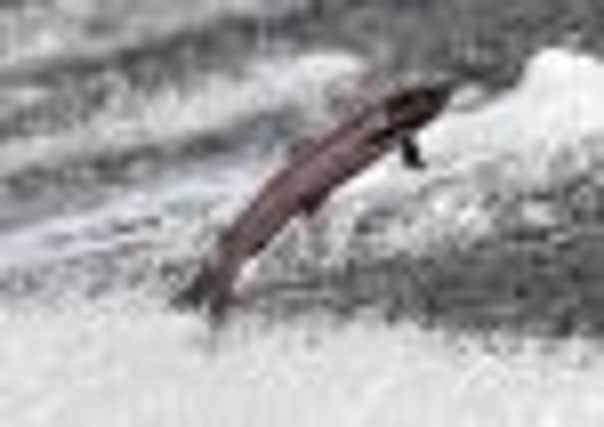Scots Salmon farmers hit out at aquaculture guide


The Sustainable Inshore Trust (Sift) – with the assistance and support of the Salmon and Trout Association and Fish Legal – has produced an information pack aimed at assisting the public in “having their voices heard” over new proposals in the industry.
But the Scottish Salmon Producers’ Association hit back, claiming it was “yet another attempt from some well-known anti-fish farming groups to undermine one of Scotland’s most successful food industries”.
Advertisement
Hide AdAdvertisement
Hide AdSift claim to be a new Scottish charity dedicated to promoting the economically and environmentally sustainable use of coastal waters.
It states the 69-page Aquaculture Information Pack’s primary focus was coastal salmon farms, the most common form of aquaculture in Scotland, and was particularly relevant to the planning system for aquaculture development.
Sift director Charles Millar said: “The whole planning process regarding aquaculture can be an incomprehensible minefield to communities and members of the public who seek to have their voices heard effectively.
“The aquaculture industry’s side is inevitably presented and promoted by professionals and the Pack should enable communities to present their views and concerns effectively, thus helping to redress the balance in the planning process.”
Sift Chairman and Fish Legal solicitor Robert Younger added: “For too long many communities in western Scotland have been essentially marginalized by the impenetrable complexities of the planning and regulatory system for salmon farming.
“The aquaculture companies, with the blessing of Scottish Government, aim to increase production by an average of 3-5% per annum over the next five years.
“As a consequence there will inevitably be a plethora of plans for new farms and the expansion of existing farms.
“If local communities are to get involved in such plans and become empowered, they will need the best information available. The Sift Pack provides the tools vital for engaging in the process.”
Advertisement
Hide AdAdvertisement
Hide AdGuy Linley-Adams, solicitor to the Salmon and Trout Association Aquaculture Campaign, said: “Many people on the west coast and in the islands of Scotland appreciate that poorly-located fish-farms can damage wild fisheries.
“Others want to protect landscape, public rights of navigation or other nature conservation interests from the harm that aquaculture can do.
“This pack is designed to help those people have a realistic chance of being heard and have their views taken seriously in the face of overwhelming central Scottish Government support for the expansion of fish-farming.”
The 69-page Pack also contains draft sample letters for communities to use as well as case studies of successful local campaigns.
But Scott Landsburgh, chief executive of the Scottish Salmon Producers’ Organisation, said: “This appears to be yet another attempt from some well-known anti-fish farming groups to undermine one of Scotland’s most successful food industries.
“The salmon industry is committed to growing in an economically and environmentally sustainable way and continues to be a major source of investment and new opportunities, with over £1.4 billion injected in to suppliers and £161.5 million input in to direct salaries during the last four years.
“Consultation on new development opportunities is undertaken with councils, community councils, statutory agencies and local communities.”
The SSPO said its members had invested over £205 million in projects over the last five years, with the Highlands and Islands being the most significant beneficiary.
Advertisement
Hide AdAdvertisement
Hide AdThe organisation also hit out at repeated attacks on sea lice damaging wild fisheries, claiming the latest scientific research from a long study in Ireland, and backed by the Irish Sea Fisheries Board (BIM), showed evidence that sea lice was not a significant factor.
A BIM statement on the results of the nine-year study said: “Sea lice infestation is unlikely to be a significant factor influencing the conservation status of salmon stocks.
“It found the level of marine mortality attributable to sea lice infestation to be very small – approximately 1 per cent in absolute terms.”
“The scare stories in relation to sea lice being a threat to wild salmon put out by the opponents of salmon farming have no basis in scientific fact.”